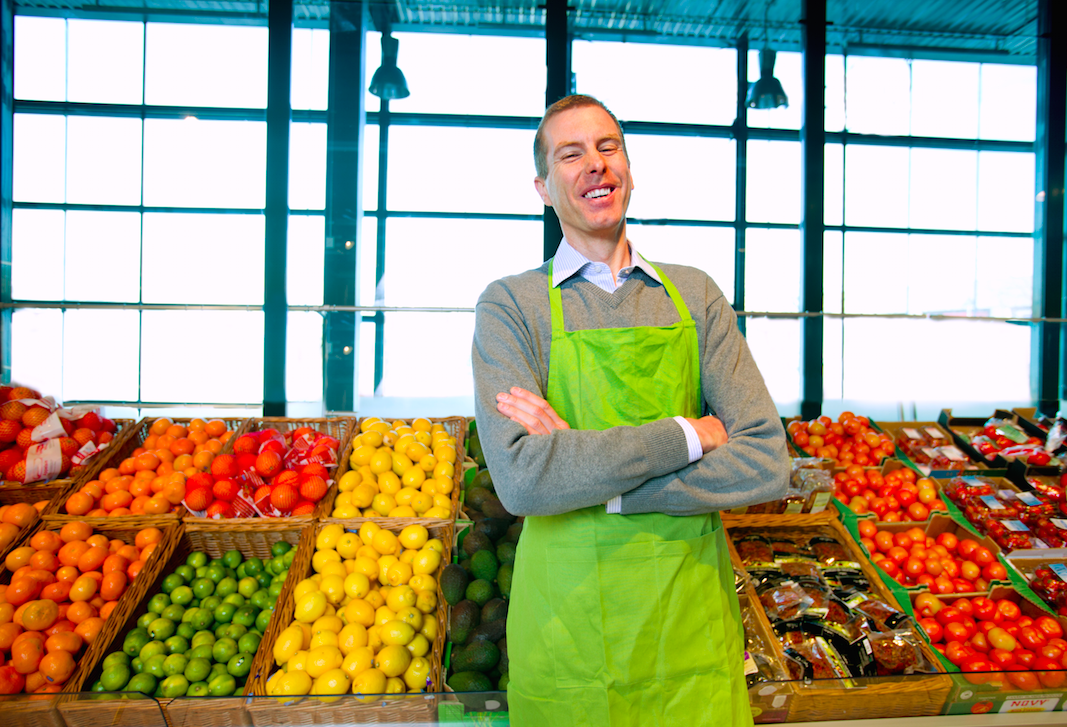
These days, nearly every brick and mortar business is looking for the perfect way to meld online shopping and in-store experiences. While it’s easy to be an e-commerce-only business, shoppers and retailers alike consistently find that a personalized relationship with a store or brand, along with an in-person experience, will breed customer loyalty, and encourage greater spending. Even major department stores like Saks Fifth Avenue are launching personal shopping web tools with the goal of getting more customers into its stores, and encouraging them to buy more once they’re there.
If you’re a small or local businesses, you don’t want to be left behind as the larger stores put big budgets toward merging the online-instore divide. Here are three instances in which technology is being used to benefit small brick and mortar businesses in innovative new ways.
Curating Groceries, Through an App
While online food services such as FreshDirect have stayed on track, consumers have shown an overall reluctance to hand all their grocery shopping over to a website. As a result, a new crop of grocery markets are opening that focus on in-store browsing and digital sales. In Chicago, the three-year-old Foxtrot is melding specialty-foods shopping with online shopping in a unique way. While their offerings include a storefront, with another on the way, 90% of the orders come from an app that allows nearby residents to curate items and have them delivered. So if you’re throwing a dinner party and forgot wine, or if you want top-shelf guacamole and brie without leaving your house, you can order through the app and the store will deliver your goods within a few hours. The items are hand-picked, and delivery costs $5.
Selling Fresh, Local Meals With Same-Day Delivery Online
Ready-made food that isn’t restaurant delivery has been a tough sell on the Internet. The San Francisco-based Munchery has been working to shift that trend. The service brings in local chefs in cities like New York and Seattle, offers them industrial kitchens, and puts them to work creating meals. Customers can then log into the app or website, choose their desired dinner, and have it delivered to their door, still warm. Each day, different menu options arrive, and the chefs focus on using local, in-season ingredients. Buying and cooking in bulk, and using their own kitchens rather than contracting with restaurants, has allowed Munchery to keep its average cost-per-meal between $10 and $12, though the CEOs goal is to lower that number to $7 to $9.
Their formula is taking off with consumers: to date, up to 90% of the weekly orders that Muchery receives are repeat customers.
Selling Goods Via the World’s Largest Online Retailer
By now, many small business owners have heard of Amazon’s Fulfillment By Amazon program. It allows small retailers to offer their goods on the giant e-commerce site. The benefits to small businesses are plenty: Amazon lets you store your products in Amazon’s fulfillment centers, and then takes responsibility for all the picking, packing, 24-7 shipping, and customer service, including managing returns. In addition, even the smallest local retailer can now have its products on display for millions of customers across the globe.
On the whole, the results have been a win-win for all parties. Small businesses get a massive platform to offer their goods, customers get access to these goods through one of the most vetted purchasing systems on the Internet, and Amazon gets more business. Granted, the field can get crowded, so it’s important to ensure that you aren’t competing with 50 other products that are virtually identical to yours. And Amazon isn’t the only e-commerce giant where small businesses can sell. Other major sites like Etsy and eBay are also great channels for small businesses looking for ways to expand their online customer base while maintaining their small size and local focus.
The Internet doesn’t have to be the enemy of brick-and-mortar business. The two can coexist in peace and harmony. These three ways are a sampling of the evolution that is happening rapidly, as commerce and digital look to find the perfect marriage.